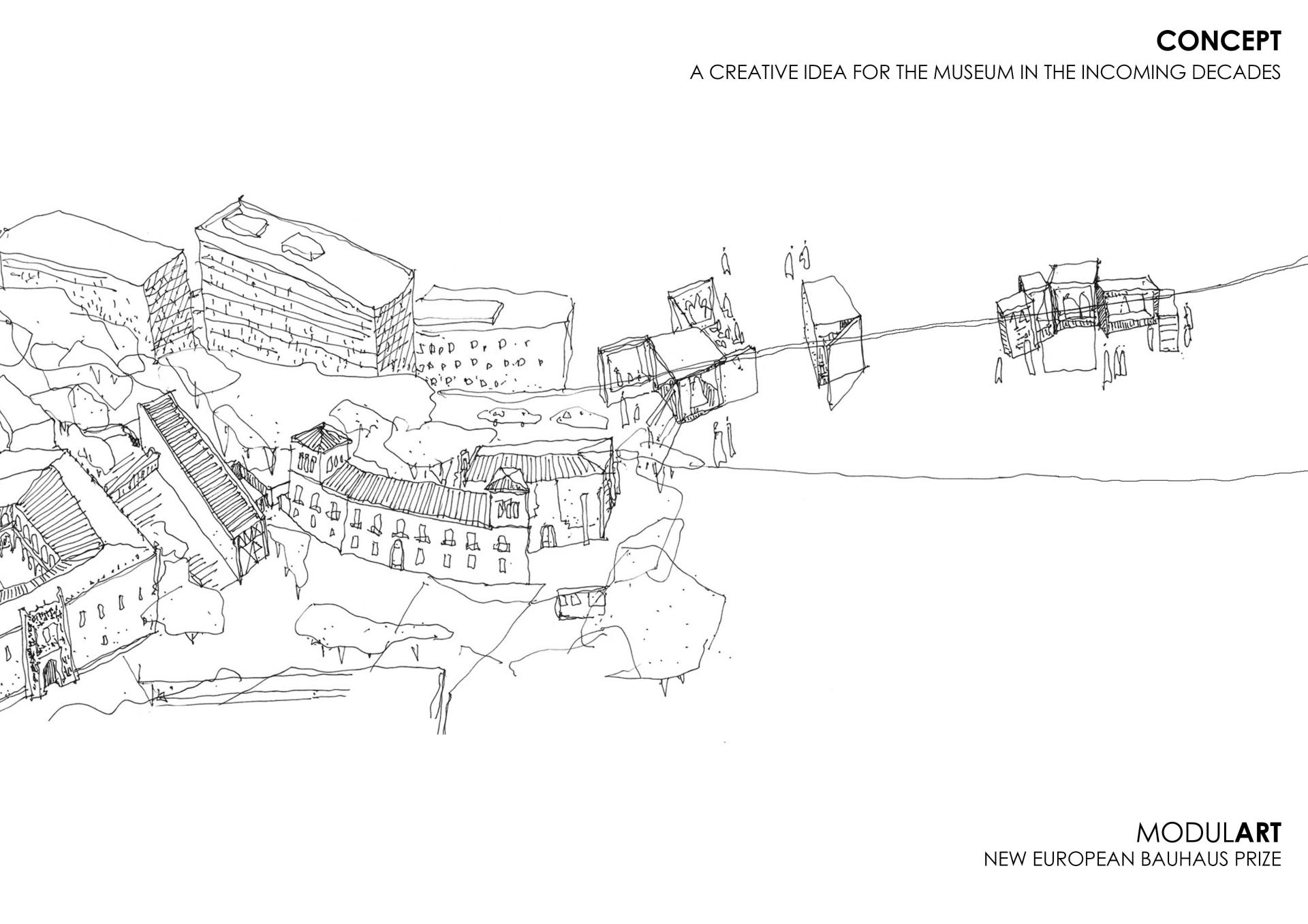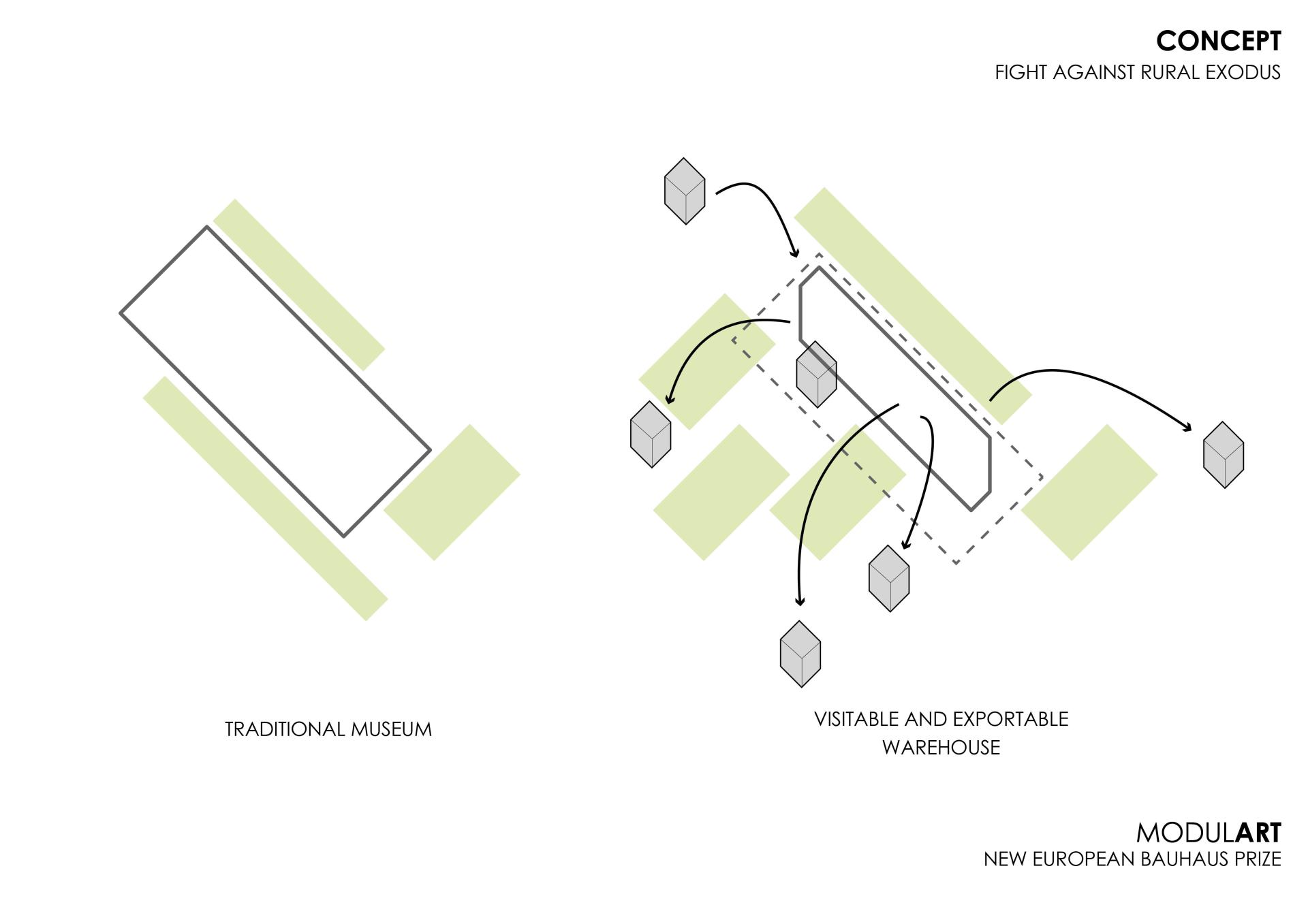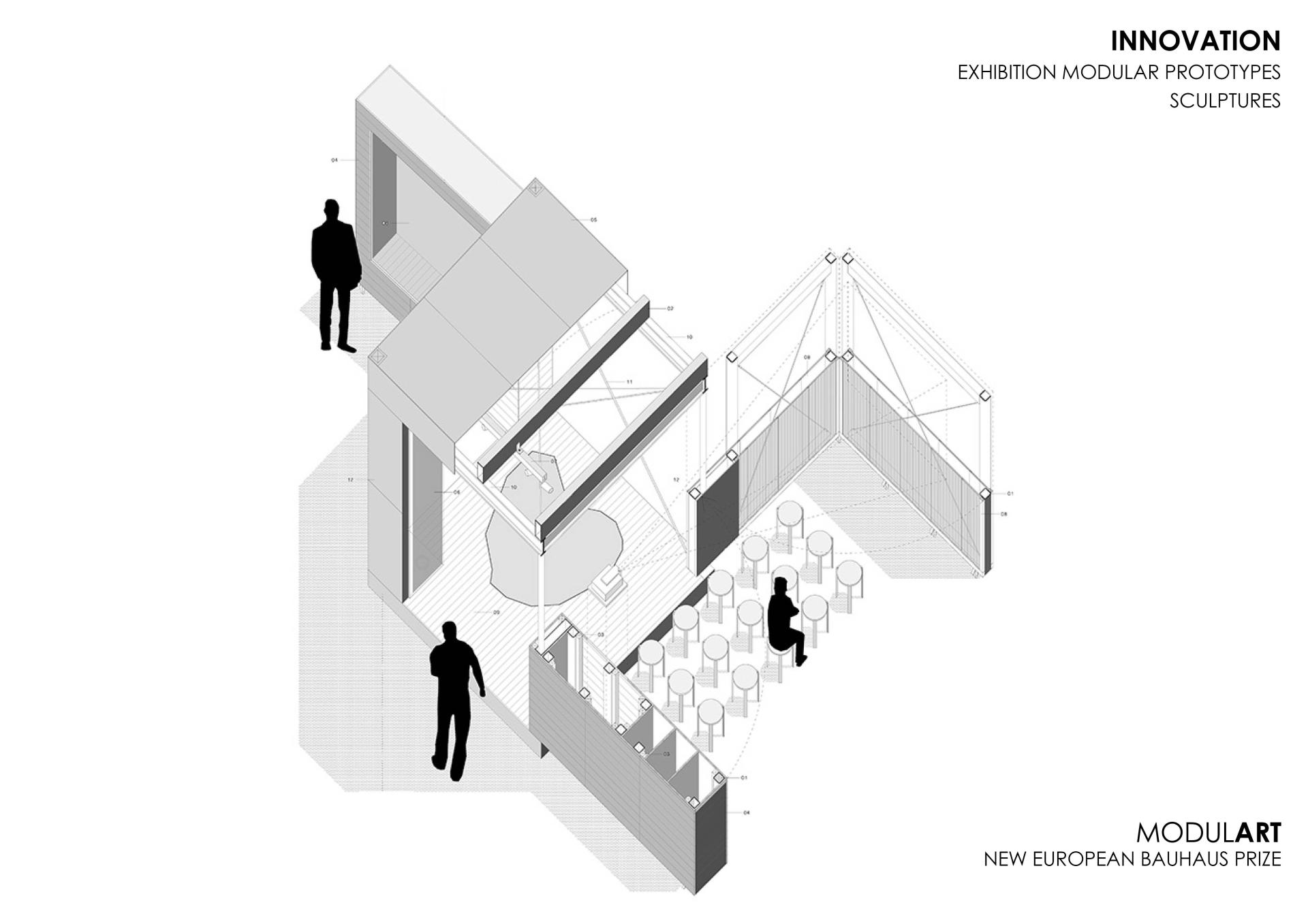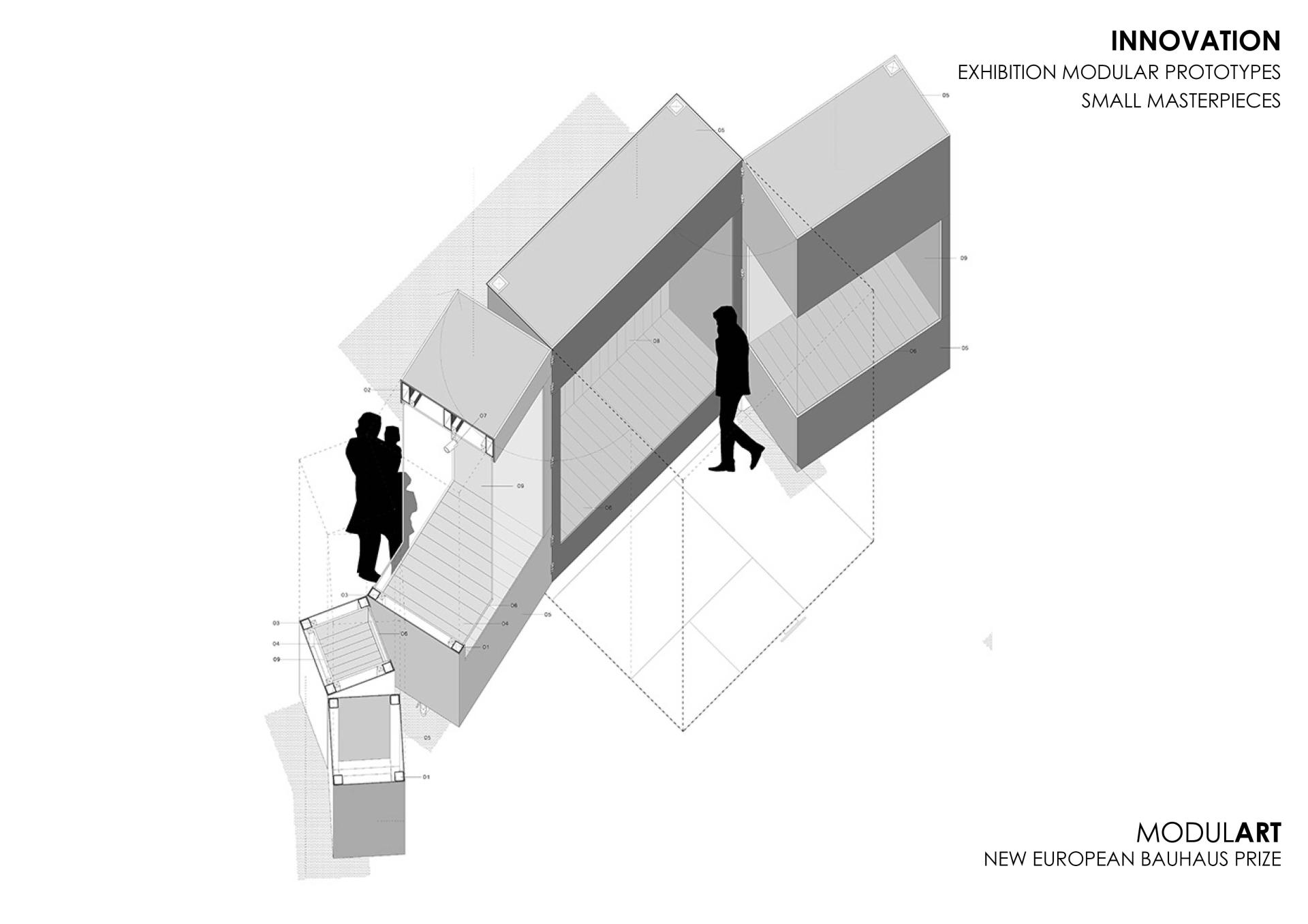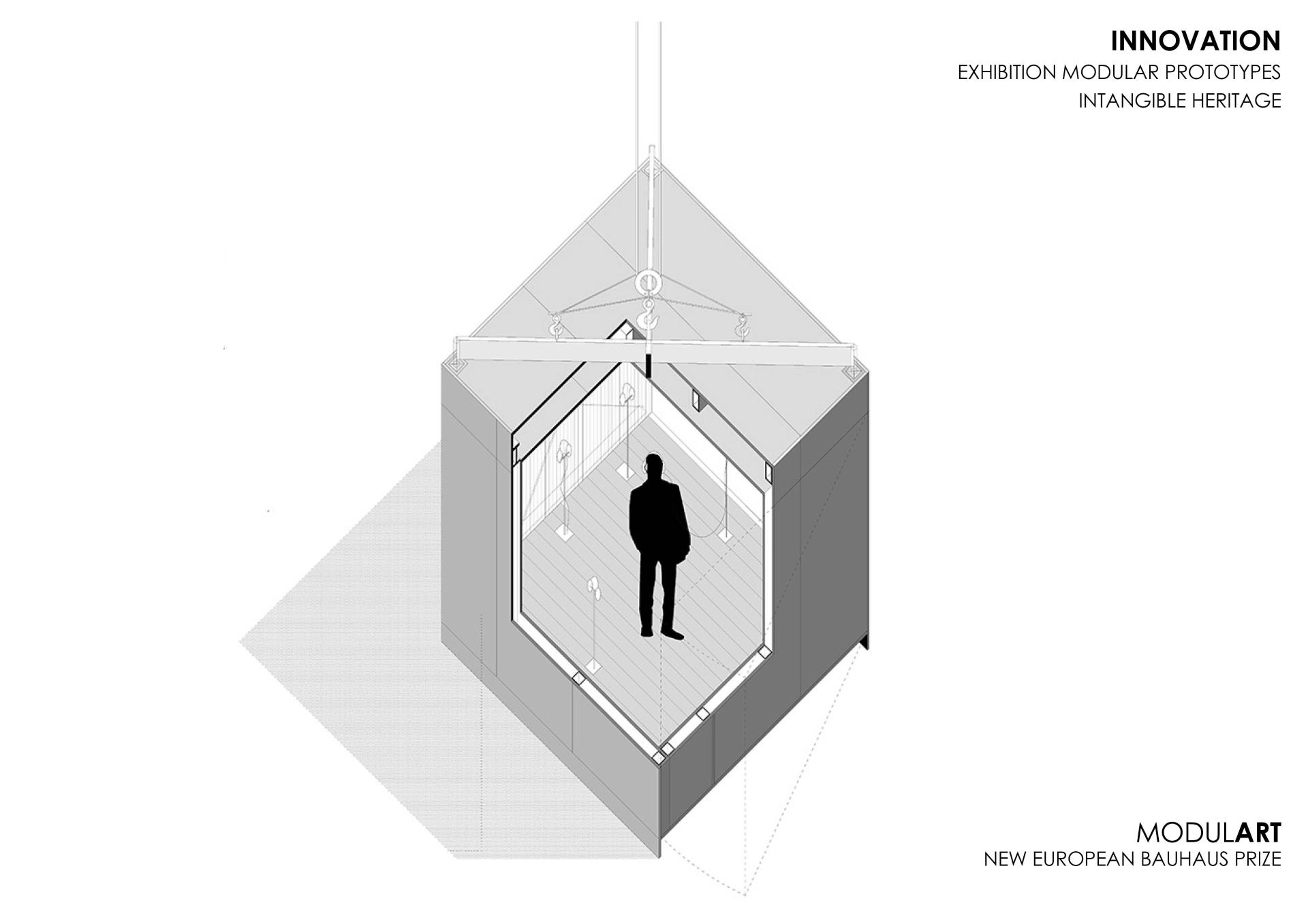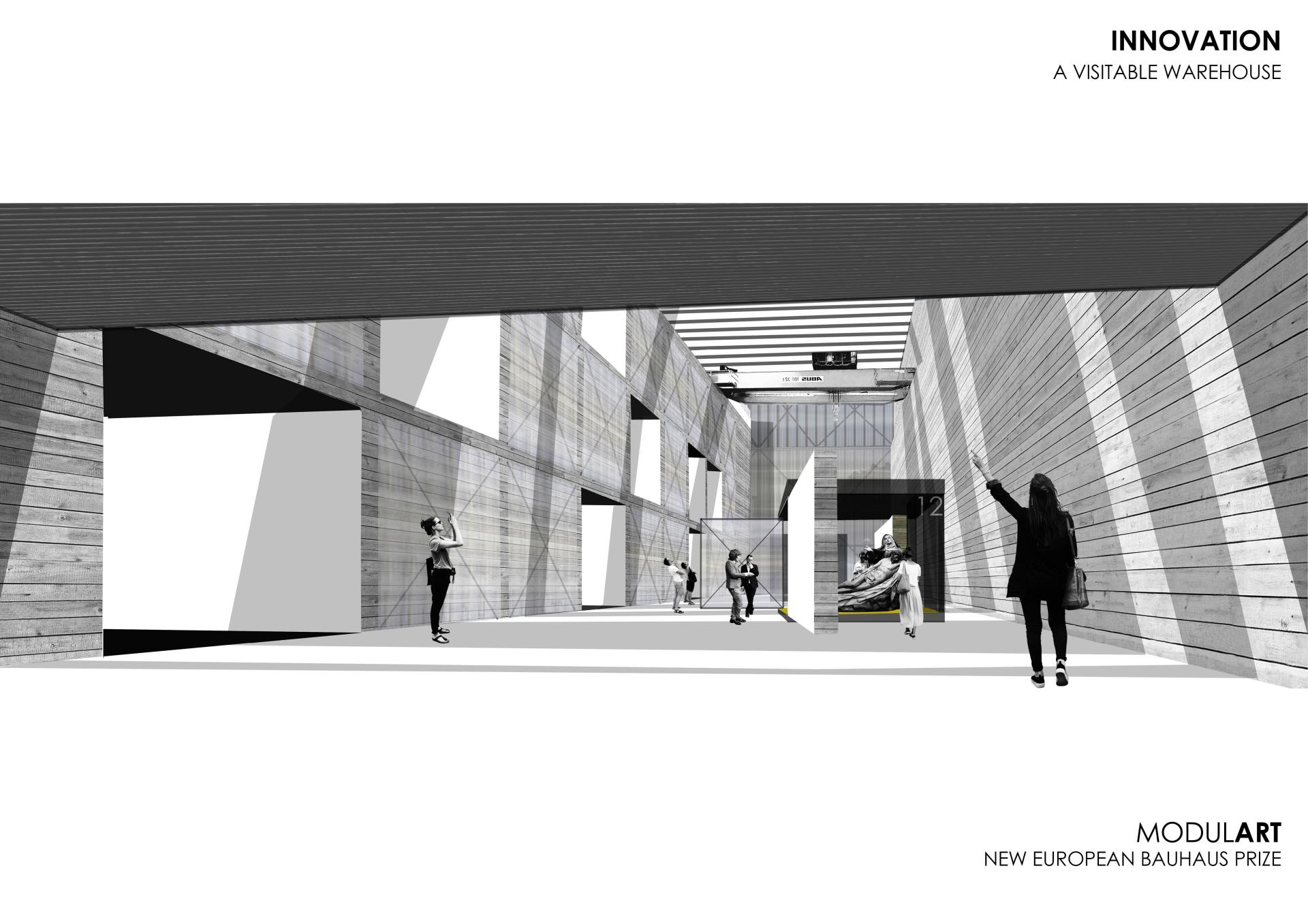MODULART. Connecting art and people
Basic information
Project Title
Full project title
Category
Project Description
The history of Europe has always been linked to the avant-garde and artistic discoveries. Nowadays it is necessary to take on challenges such as the impact of tourism on our cities as well as facing the progressive aging of European population, the climatic emergency, the extreme urbanization and the rural exodus. MODULART is a creative idea and an alternative proposal for these issues. It is a typological reinvention of the museums as places in constant transformation connected to people.
Geographical Scope
Project Region
Urban or rural issues
Physical or other transformations
EU Programme or fund
Which funds
Description of the project
Summary
MODULART wants to imagine the museums of the coming decades. Its name is given to highlight the infinite solutions of exhibition and conservation which it offers, instead of proposing fixed result becoming the process (of creating, researching, exhibiting, visiting, discovering) a goal itself. MODULART wants to relate two realities occurring today in Europe:
- Democratizing the access to art through a flexible, versatile and mobile exhibition and conservation system. Many of European art collections do not have as much impact or visibility as they should due to a lack of infrastructure. MODULART is a group of architectural prototypes ingeniously designed to create complete universes around a certain work of art or theme. It is a modular solution that adapts to all types of artistic formats: sculpture, small pieces, graphic documents and even intangible heritage.
- Using the art to connect the urban areas of large European cities with rural regions that lose population every year. On the other hand, in countries marked by the rural exodus, MODULART is based on the ability of prototypes to house masterpieces of art which leave museums and temporarily benefit remote areas. This project firmly believes in the transformative capacity of art at all scales and in all settings. At the same time, it is an easy stackable system allowing museums to be turned into real warehouses that can be visited.
The project, which has a universal vocation, is originally conceived for one of the areas where these two situations converge. Valladolid, in Spain, is the capital of Castille and Leon, the most depopulated region in Europe. At the same time, the National Sculpture Museum located in this city, has been lacking of strategies to make itself known and to export and value its unique collection of pieces of art. Also, the protect has been adapted to create a mobile system of exhibitions in the Grand Paris Metropolitan Region and spread the cultural offer to different municipalities.
Key objectives for sustainability
MODULART becomes aware of the issue of sustainability insofar as it is an architectural piece of the 21st century. The project achieves an improvement in sustainability from the conception through three main goals:
1. The minimum footprint. The European cities of tomorrow must be green parks in which the built mass is related with their natural spaces in a balanced way. MODULART aims to provide an alternative to the large built areas that we have inherited. The design of prototypes housing masterpieces of art will lead to create stackable museums and visitable warehouses where spaces are more efficient. This attitude will free up a large amount of surface which could be used for parks, gardens or public space.
2. Industrialized modular systems and low-carbon building materials. On the other hand, the idea of creating modular and standardized prototypes allows us to take up the reflections of industrialized architecture that generates economic solutions without forgetting handcrafts techniques. The structural system developed is designed for the predominant use of materials that have a low carbon impact such as recycled wood and steel. At this point there is a double aim in the constructive system; firstly, being sustainable itself and secondly, raising awareness of these solutions as the most consistent ones in the near future.
3. Urban regeneration: The project will be an adaptable solution to multiple urban situations. In this way, the project is interested in giving alternative ideas for urban regeneration. The prototypes that will house the masterpieces can be adapted to multiple architectural formats. The use of degraded industrialized spaces and the new possible life of a lot of city historical centres are especially interesting. In addition, the versatility and reversibility of the proposal allows the transformation of remaining places multiple times without fixing them to a specific use. The value lies in spatial recycling.
Key objectives for aesthetics and quality
MODULART also represents a reflection on aestheticism as an architectural piece. The image follows the function for which the prototypes are conceived: the creation of visitable warehouses and easy exportation of art. The aesthetic aspects are defined by three main ideas:
1. The exhibition prototype itself. The exhibition capsules are cubic pieces of 3x3x3 m that try to contain an infinite universe of possibilities in a very simple geometry. The storage of these pieces establishes the basis of a new type of museum in which everything is shown and accessible to the public. The materials of these boxes are mainly wood and recycled steel. This selection conditions an aesthetic and it is used as an example of recycled materials as well. The specific features of the exhibition prototypes are defined according to the preservation conditions of the art pieces that they will house. However, the use of low impact materials such as polycarbonate or recycled natural elements is preferred.
2. A versatile envelope. The idea of MODULART can be applied in a multitude of urban situations. It is a tool for creative uses in degraded urban spaces, colonizing them with art. These versatile warehouses create facade envelopes capable of adapting to different environments, blending in with the immediate context, using it for vegetation, energy creation or standing out as an icon when necessary. In the specific case study in Valladolid (Spain), the envelope is silent and is camouflaged with the textures of the historic city centre.
3. Creation of specific universes in relation with a piece or a theme. The great opportunity of the exhibition prototypes is the organization of related selections of works through the same theme or reflection. This will create surprising realizations. The prototypes try to define an aesthetic and intellectual approach to the pieces and works of art to be preserved.
Key objectives for inclusion
MODULART was born with the intention of giving to society a democratized, creative and avant-garde access to the large number of art collections that exist today in the continent. It is an idea that tries to update many of the museums that exist to the needs of the 21st century through architecture. It is an idea conceived by and for people.
1. Visibility for small art collections. Despite the high number of art collections and museums in Europe, many small organizations do not have enough resources to achieve the visibility they deserve to preserve and communicate our heritage. MODULART can be a real opportunity for these small collections, allowing their art pieces to travel without altering their conservation conditions and increasing their impact on other areas.
2. Fight against depopulation and heritage conservation. Many of the European regions pale in comparison to a few urban areas that are increasingly dense. The idea of using art and bringing it closer to these regions at risk of depopulation transmits the message of art as a common good. This will help, feeding back this process in which the main objective is artistic preservation and its appropriation by society. Art itself is capable of transforming our lives and of preparing us for a new era in the decades to come.
3. Democratize museums as open warehouses. Museums and art collections usually allow a very limited access to their works. MODULART tries to democratize access to museums by creating authentic open warehouses where exhibited pieces are selected and set up. Specialized researchers and visitors will be able to naturally access a large part of these collections. This would create a new unprecedented architectural typology as visitors and the conservation of the pieces are the main actors.
Physical or other transformations
Innovative character
MODULART is not intended as a project to deal with problems individually, but rather addresses different aspects in a transversal way.
In relation to sustainability, the project proposes a new solution to the use of empty public spaces in our big, medium and small cities. Looking for a great impact, abandoned places will come back to life with a cultural and artistic activity.
In relation to aesthetics, the project is a commitment to beauty understood as the honesty and truth of the elements that make it up. The use of recycled materials in a visible way, the choice of a formal radicalism, the volumetric simplicity of the piece come together to create a useful, habitable and beautiful object.
In relation to social inclusion, the project thinks about the feeling of belonging of those who live on the periphery, on the margins of the cultural life in our countries. With the growth of cities, the main artistic institutions are concentrated in the main capitals, forgetting the rural regions and depriving those who live in them of a part of the heritage in many cases. The creation of traveling exhibition modules will make possible to bring the cultural life of cities closer to the countryside.
For these three reasons, the MODULART project addresses these themes equally and uses them as an inspiration to make the germ of its raison d'être. This project proves not only that these aspects are important in the development of any architectural idea, but that they are fundamental when combined and applied with the same importance. The combination of sustainability, aesthetics and social inclusion will become our cities fairer, more responsible and more beautiful.

